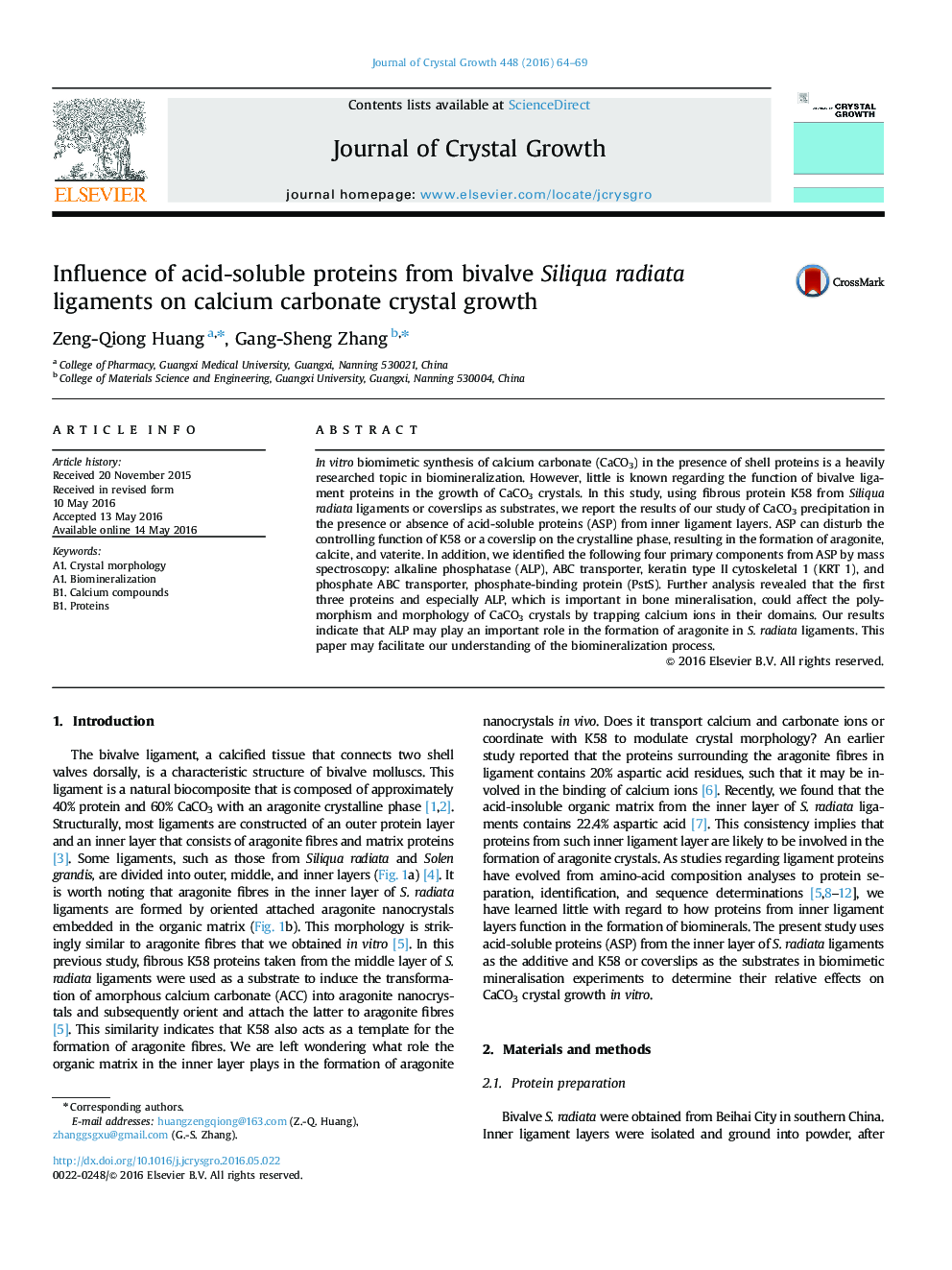| Article ID | Journal | Published Year | Pages | File Type |
|---|---|---|---|---|
| 1789516 | Journal of Crystal Growth | 2016 | 6 Pages |
•Alkaline phosphatase related to bone mineralisation was found in bivalve ligament.•Acid soluble protein from bivalve ligament can stabilize vaterite crystal.•Acid soluble protein induces the formation of calcite with stepped structure.•Alkaline phosphatase may play an important role in the formation of aragonite.
In vitro biomimetic synthesis of calcium carbonate (CaCO3) in the presence of shell proteins is a heavily researched topic in biomineralization. However, little is known regarding the function of bivalve ligament proteins in the growth of CaCO3 crystals. In this study, using fibrous protein K58 from Siliqua radiata ligaments or coverslips as substrates, we report the results of our study of CaCO3 precipitation in the presence or absence of acid-soluble proteins (ASP) from inner ligament layers. ASP can disturb the controlling function of K58 or a coverslip on the crystalline phase, resulting in the formation of aragonite, calcite, and vaterite. In addition, we identified the following four primary components from ASP by mass spectroscopy: alkaline phosphatase (ALP), ABC transporter, keratin type II cytoskeletal 1 (KRT 1), and phosphate ABC transporter, phosphate-binding protein (PstS). Further analysis revealed that the first three proteins and especially ALP, which is important in bone mineralisation, could affect the polymorphism and morphology of CaCO3 crystals by trapping calcium ions in their domains. Our results indicate that ALP may play an important role in the formation of aragonite in S. radiata ligaments. This paper may facilitate our understanding of the biomineralization process.
